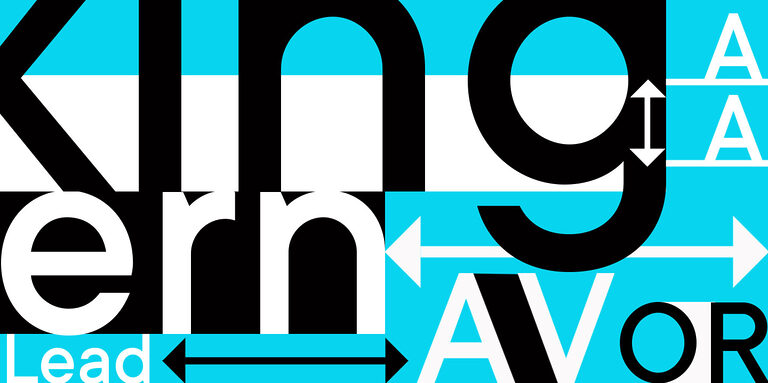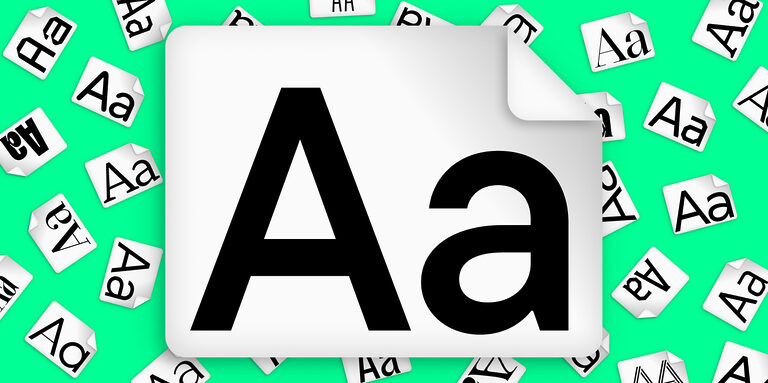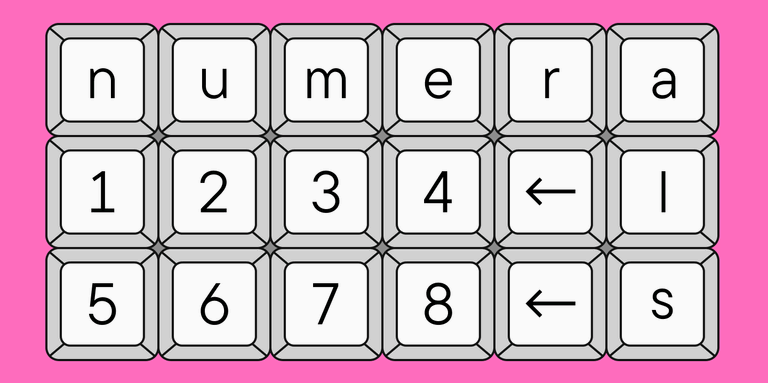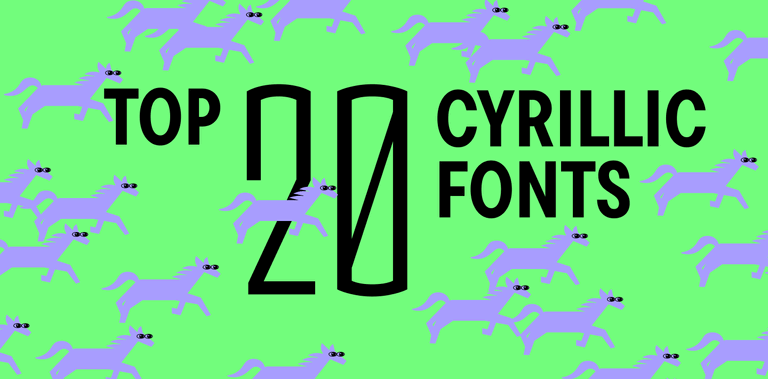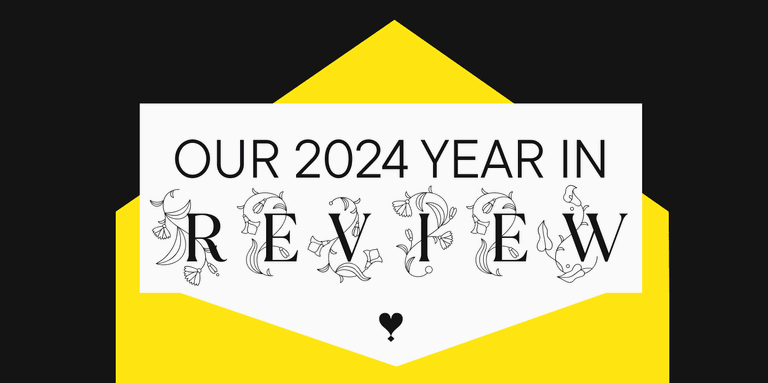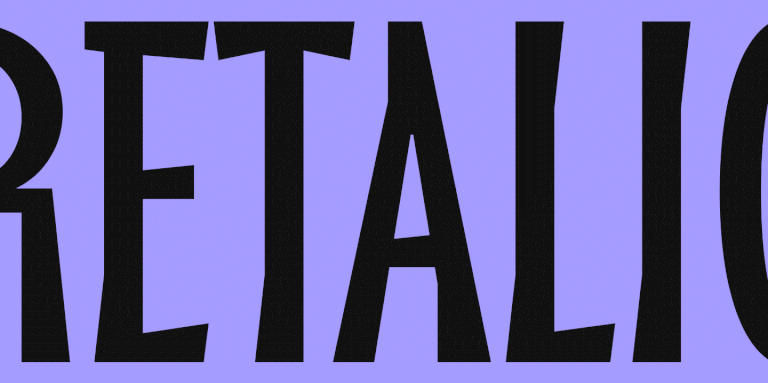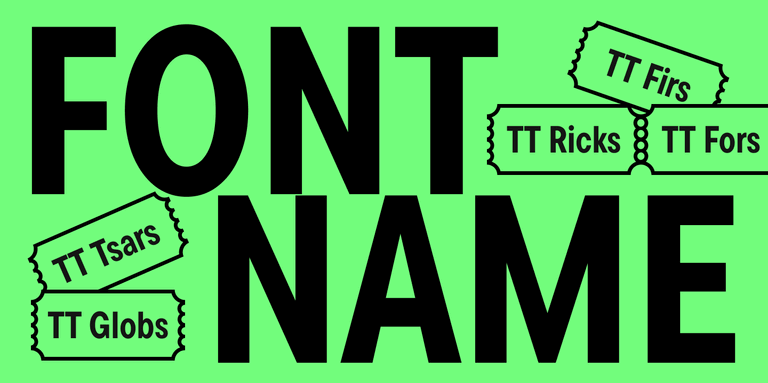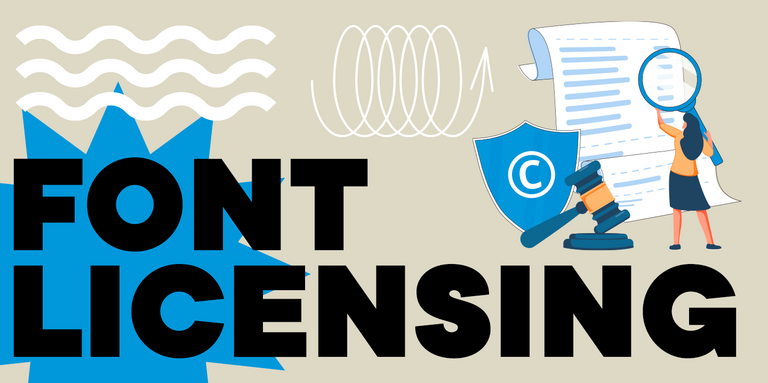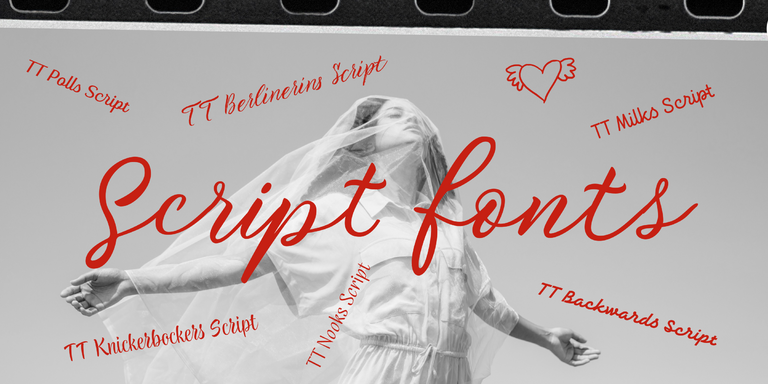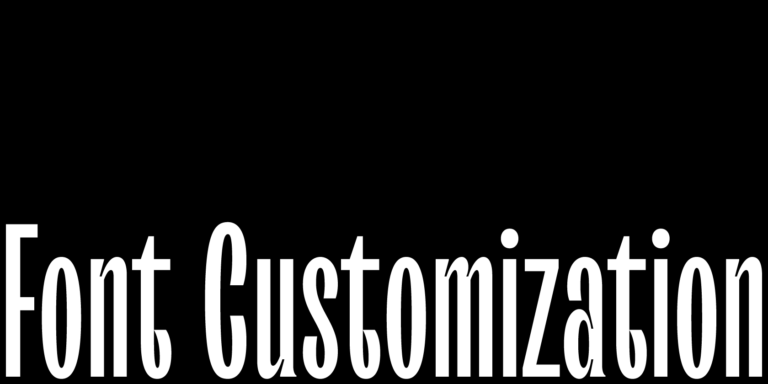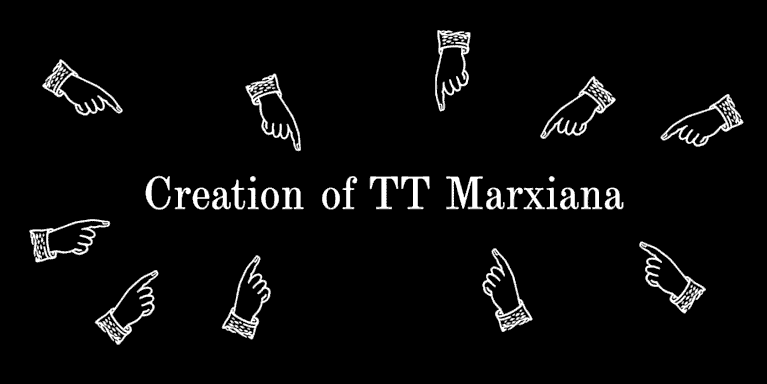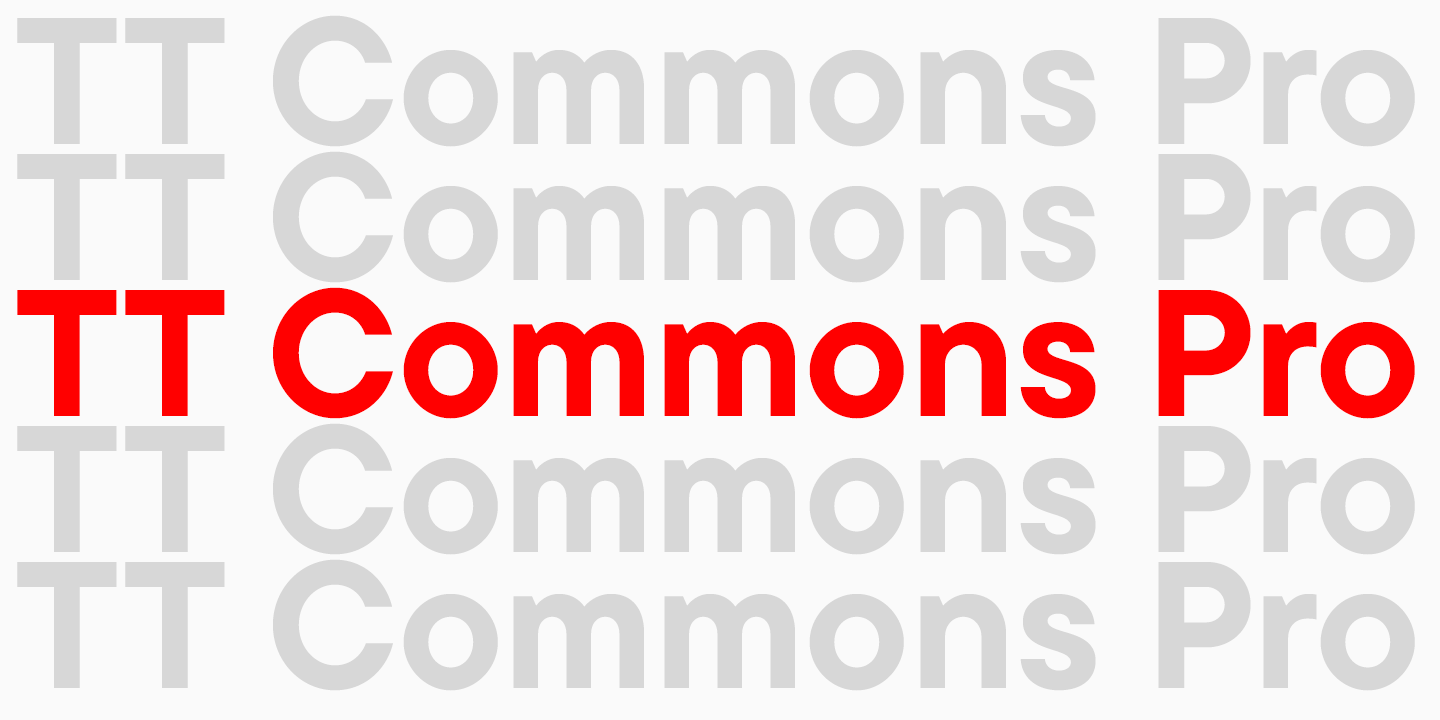
La fuente TT Commons™ Pro no necesita presentación, pues ha sido un exitoso bestseller de TypeType durante muchos años. Esto no son solo palabras: desde 2018, la fuente ha sido un éxito de ventas el 93% del tiempo en las plataformas.
TT Commons™ tiene una historia fascinante, ya que fue creada en el lejano 2016 y, en ese entonces, no se pensó que sería lanzada como una fuente comercial. A pesar de ello, la versión inicial de TT Commons™ incluía dos estilos, y en 2021 experimentó una importante actualización, recibiendo un nuevo nombre: TT Commons™ Pro.
Con motivo del lanzamiento, en 2022, de la nueva subfamilia TT Commons™ Pro Mono, decidimos invitar a los diseñadores a explorar los entresijos de la tipografía y compartir la historia de cómo una fuente originalmente corporativa, creada para el uso interno de TypeType, se convirtió en uno de los principales motores de la compañía.
Primeros bocetos y desarrollo
A finales de 2016, a Pavlo Emelyanov, autor de TT Commons™, se le ocurrió la idea de crear una fuente corporativa para el estudio TypeType. La intención era que la futura familia tipográfica fuese interesante y memorable, pero al mismo tiempo concisa y minimalista. Dado que nuestro estilo corporativo tenía un carácter neutral, la fuente debía integrarse perfectamente en este estilo. Planeábamos usarla para diseñar el logotipo, el nuevo sitio web, los contratos con clientes y la documentación interna.
Queríamos que la fuente fuese expresiva, pero a la vez neutral y sencilla. Con estas ideas en mente se crearon los primeros bocetos: algunas opciones para el logotipo y unas cuantas letras.

A continuación, ampliamos el conjunto de caracteres trabajando únicamente en un solo estilo, intermedio entre Medium y DemiBold. En aproximadamente dos semanas, los especialistas del estudio perfeccionaron la fuente, y esta se puso en uso.

La fuente recibió el nombre de TT Commons™, que puede traducirse como común. Tal como habíamos planeado, aplicamos la nueva tipografía a todo el estilo corporativo. Obtuvimos una fuente estética que agradó a los diseñadores gráficos por su aspecto visual y a los colegas que trabajaban con documentos, gracias a su simplicidad y facilidad de uso.

Una característica distintiva de la fuente era que el tamaño de TT Commons™ era un 11% menor en comparación con las fuentes estándar. Normalmente, la altura de las letras mayúsculas es de 700 unidades tipográficas, mientras que en TT Commons™ era de 630. Esta peculiaridad surgió de manera natural y, para su uso interno, estos parámetros no dificultaban el trabajo con la fuente, ya que no planeábamos lanzar TT Commons™ en plataformas públicas.

Creación de una familia tipográfica comercial
Inmediatamente después del lanzamiento de TT Commons™ como fuente corporativa, empezamos a recibir numerosas consultas sobre esta nueva familia tipográfica. Los usuarios veían una fuente que les gustaba, podían descubrir el nombre TT Commons™ escondido en el código de la página. Esto generaba un conflicto: había una fuente estética que la gente quería adquirir, pero dicha fuente no estaba disponible en ninguna plataforma ni en nuestro sitio web.
La audiencia interesada en TT Commons™ seguía creciendo, y nos dimos cuenta de que era necesario comenzar a desarrollar una familia tipográfica completa para uso comercial. Ampliamos el repertorio, añadimos soporte para más idiomas y aumentamos el número de estilos tipográficos. Decidimos no cambiar los parámetros ni el carácter visual de la fuente.
El estilo Black estuvo listo para el verano de 2017; más tarde diseñamos el estilo delgado Thin y luego los estilos intermedios. Para otoño ya estaban listos todos los estilos rectos: Thin, ExtraLight, Light, Regular, Medium, DemiBold, Bold, ExtraBold y Black. Mientras el equipo técnico realizaba el hinting de estos estilos, los diseñadores tipográficos trabajaban en la creación de las versiones inclinadas.
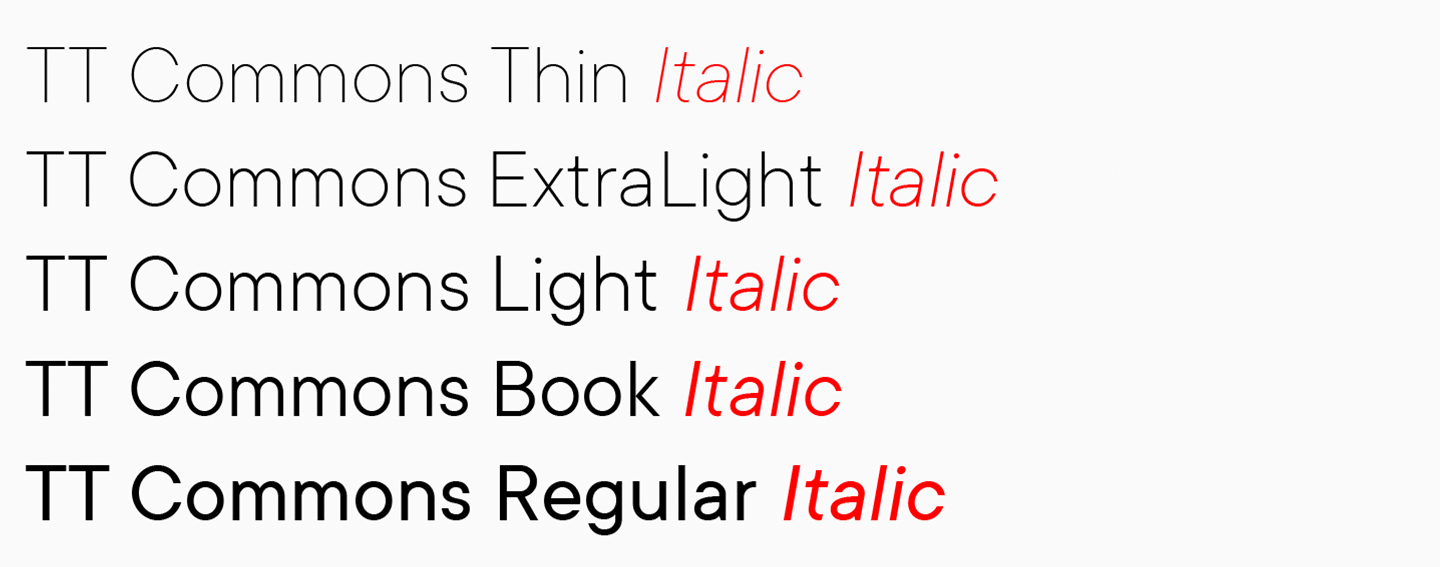
A principios de 2018, la fuente fue lanzada en las plataformas. La primera versión comercial de TT Commons™ contaba con 18 estilos y 771 glifos. El lanzamiento oficial tuvo lugar en marzo de 2018, y casi de inmediato, la fuente se convirtió en uno de los grandes éxitos del estudio.
El progreso técnico de TypeType, así como el crecimiento profesional del equipo gráfico, influyeron directamente en el desarrollo de TT Commons™. Queríamos mejorar continuamente esta familia tipográfica, implementar nuevas tecnologías internas y ampliar el repertorio de caracteres. Así surgieron las versiones adicionales: 2, 2.1 y 2.110.
Mejoramos la fuente a nivel técnico, modificamos la codificación y añadimos nuevos glifos. La versión 2.0 mantenía los 18 estilos originales, pero el repertorio se amplió a 1,230 glifos. Posteriormente, la versión 2.1 incorporó nuevos estilos, aumentando el total a 24. También se amplió el repertorio de caracteres a 1,434 glifos.
Mejorábamos la fuente constantemente, y cada versión representaba una evolución natural del proyecto. A pesar de los cambios significativos, la fuente conservaba todas las características que la hacían tan popular entre los diseñadores de todo el mundo.
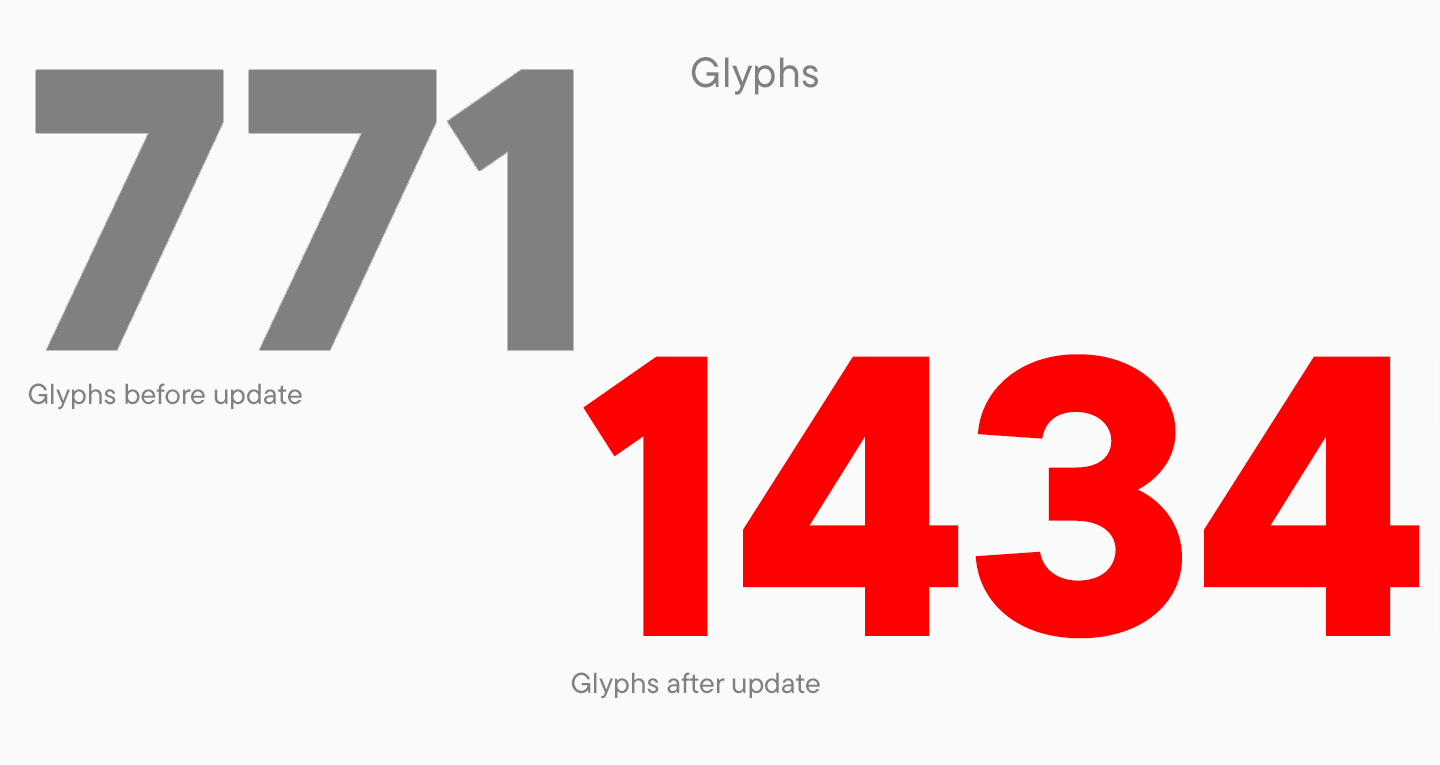
La última versión del clásico TT Commons™ se lanzó en 2019, pero incluso después de su lanzamiento comenzamos a preparar una nueva actualización global y significativa para el proyecto. La fuente bestseller estaba a punto de renacer y ser prácticamente rediseñada por completo.
La contribución de la audiencia a TT Commons™ y la customización
En nuestro estudio existe una regla no escrita: siempre escuchar las opiniones de la audiencia. Los comentarios de los usuarios sobre nuestras fuentes nos permiten desarrollar, perfeccionar y embellecer nuestros proyectos. Por supuesto, no es solo eso; nuestro equipo siempre se esfuerza por mejorar profesionalmente. Sin embargo, sin retroalimentación, es más difícil saber si estamos avanzando en la dirección correcta.
En la historia de TT Commons™, los comentarios de los usuarios fueron el motivo por el cual esta fuente ahora está disponible para proyectos individuales. No obstante, las opiniones de la audiencia continuaron influyendo en su evolución durante todo su desarrollo.
Desde el lanzamiento de la familia tipográfica en las plataformas, recibimos numerosos comentarios y preguntas sobre la fuente. La mayoría se refería a proyectos de personalización de TT Commons™, los cuales más tarde influyeron en la creación de TT Commons™ Pro.
La customización es un servicio habitual en TypeType, mediante el cual modificamos una fuente para adaptarla a un proyecto específico, alterando parcial o completamente aspectos técnicos, visuales u otros. Los ejemplos más frecuentes incluyen agregar un logotipo al conjunto de caracteres de la fuente, reducir el número de idiomas para aligerar su peso o renombrar la fuente para un cliente.
Todas estas personalizaciones también se llevaron a cabo en TT Commons™, aunque algunos de los pedidos fueron únicos para esta fuente.
¿Recuerdas que TT Commons™ fue diseñada con dimensiones no estándar, reducidas en un 11%? Esta peculiaridad inicial no resultó práctica para muchos clientes, por lo que la solicitud más común de personalización fue ajustar los tamaños de la fuente a los estándares habituales de las familias tipográficas más populares.
Por ejemplo, empresas como Vidmob, MATTR y Ripple solicitaron este tipo de personalización.

En el próximo capítulo contaremos cómo estas solicitudes influyeron en la creación de TT Commons™ Pro, pero ahora pasemos a otro tipo de customización común realizada para TT Commons™. Este tipo de personalización era solicitado principalmente por diseñadores que trabajaban en programas de diseño de interfaces. En una fuente, existe un concepto conocido como línea media, una línea imaginaria que determina cómo se alinea el texto, por ejemplo, dentro de botones. Para que las palabras se vean armoniosas, deben estar centradas. Sin embargo, al trabajar con TT Commons™, muchos diseñadores encontraron dificultades porque la línea media estaba ligeramente desplazada. Modificamos el nivel de la línea media para varios proyectos, y como resultado, comenzamos a prestar más atención a este parámetro en todas nuestras fuentes. Por cierto, en TT Commons™ Pro, los diseñadores que trabajen en programas de diseño de interfaces encontrarán una experiencia más cómoda.

Sin duda, también realizamos customizaciones más significativas. Nos referimos a cambios gráficos en los glifos, solicitados por empresas, para que la fuente se adaptara al estilo corporativo del proyecto o a las necesidades específicas del cliente.
La personalización más grande la llevamos a cabo para la empresa Ripple, donde realizamos las siguientes modificaciones:
- Ajustamos el corte del asta en la letra a, que originalmente tenía un ángulo, para que fuera recto.
- Eliminamos el espolón en la letra mayúscula G.
- Hicimos la apertura de la letra e más abierta.
- Ensanchamos la letra S.
- Redibujamos el % y las cifras 6 y 9.

La fuente final recibió un nuevo nombre y se convirtió en parte del proyecto.
Sin duda, algunas personalizaciones son únicas y están relacionadas con la visión específica del cliente para su proyecto. Sin embargo, en el caso de TT Commons™, muchas de las personalizaciones fueron recurrentes, y no podíamos ignorar los deseos de la mayoría.
Crear una nueva versión TT Commons™ 3.0 resultaba imposible, ya que el proyecto requería una reinvención completa de la fuente. Y así, comenzamos a trabajar en ello.
Desarrollo de TT Commons™ Pro y TT Commons™ Pro Mono
Para el momento en que comenzó el trabajo en TT Commons™ Pro, habíamos crecido significativamente como estudio de diseño tipográfico. Contábamos con sistemas propios para abordar tareas específicas, como nuestro enfoque característico para el kerning y el hinting manual. Nuestro programador desarrolló una herramienta útil para trabajar con tipografías, y el departamento gráfico había alcanzado un alto nivel de profesionalización.
Rediseñar por completo un proyecto ya consolidado, preservando su singularidad, es tanto un desafío emocionante como una gran responsabilidad.
Especialmente teniendo en cuenta que no queríamos prolongar el lanzamiento de la nueva versión durante años, lo que llevó a involucrar a varios especialistas trabajando en paralelo en TT Commons™ Pro. Este enfoque representaba un reto, ya que cada diseñador tiene su propia visión y lógica de trabajo, lo que inevitablemente influye en el resultado final. Coordinar las acciones de distintos especialistas para lograr un resultado armonioso, manteniendo al mismo tiempo el entusiasmo y la creatividad de cada uno, fue una tarea compleja. Sin embargo, creemos que logramos superar este desafío y aprovechamos la experiencia obtenida para aplicarla en otros proyectos de gran escala.
Este esfuerzo conjunto fue solo una pequeña parte del trabajo monumental realizado en TT Commons™ Pro.
En primer lugar, queríamos aumentar las proporciones del nuevo tipo de letra a dimensiones más familiares para los usuarios, ya que esta era una solicitud recurrente de nuestra audiencia. Antes de proceder, realizamos un estudio para determinar los valores óptimos para la nueva versión que mantuvieran la esencia de TT Commons™ Pro: reconocible, legible y con un carácter neutral. En la versión Pro, la altura de las letras mayúsculas se ajustó a 700 unidades y la de las minúsculas a 500 unidades.

Durante el proceso de investigación, identificamos otra característica: el estilo regular de TT Commons™ parecía más pesado en comparación con los estilos regulares de otras tipografías. Por este motivo, en TT Commons™ Pro trabajamos cuidadosamente en los grosores del estilo regular, lo que nos llevó a replantear las proporciones de grosor de toda la familia tipográfica. A primera vista, la diferencia entre ambas versiones no es tan evidente, pero al observar con detenimiento, resulta claramente perceptible.

Por cierto, durante el desarrollo de TT Commons™ Pro realizamos varios estudios. Uno de ellos fue una prueba ciega, que nos ayudó a resolver una de las tareas más importantes en el proceso de trabajo con la familia tipográfica.
El tema en cuestión era la forma de los óvalos, que en la versión clásica de TT Commons™ tenían un diseño romboidal. Queríamos modificarlos para hacerlos más redondeados, pero al mismo tiempo temíamos que esto pudiera eliminar una de las características gráficas distintivas del famoso tipo de letra.
No nos atrevimos a tomar una decisión tan importante de manera autónoma dentro del equipo de trabajo de TT Commons™ Pro. Por ello, creamos varias versiones de los óvalos y los incluimos en textos escritos con la tipografía. En una versión, los óvalos mantenían su forma romboidal, mientras que en otras adoptaban contornos más redondeados, con diferentes grados de hinchazón. Formamos un grupo focal compuesto por colegas que no estaban involucrados en el desarrollo de TT Commons™ Pro y les mostramos los textos, marcados con símbolos específicos, para distinguir las versiones.

Al principio, nuestros colegas no notaron exactamente qué había cambiado, lo cual consideramos un punto positivo. Esto nos permitió entender que la tipografía no perdía su carácter al modificar la forma de los óvalos. Sin embargo, posteriormente, todos los participantes describieron qué era lo que había cambiado en la tipografía, y la mayoría votó a favor de la opción más radical, con los óvalos más redondeados. En TT Commons™ Pro puedes apreciar la nueva forma de los óvalos, donde ya no queda rastro de la romboidalidad.
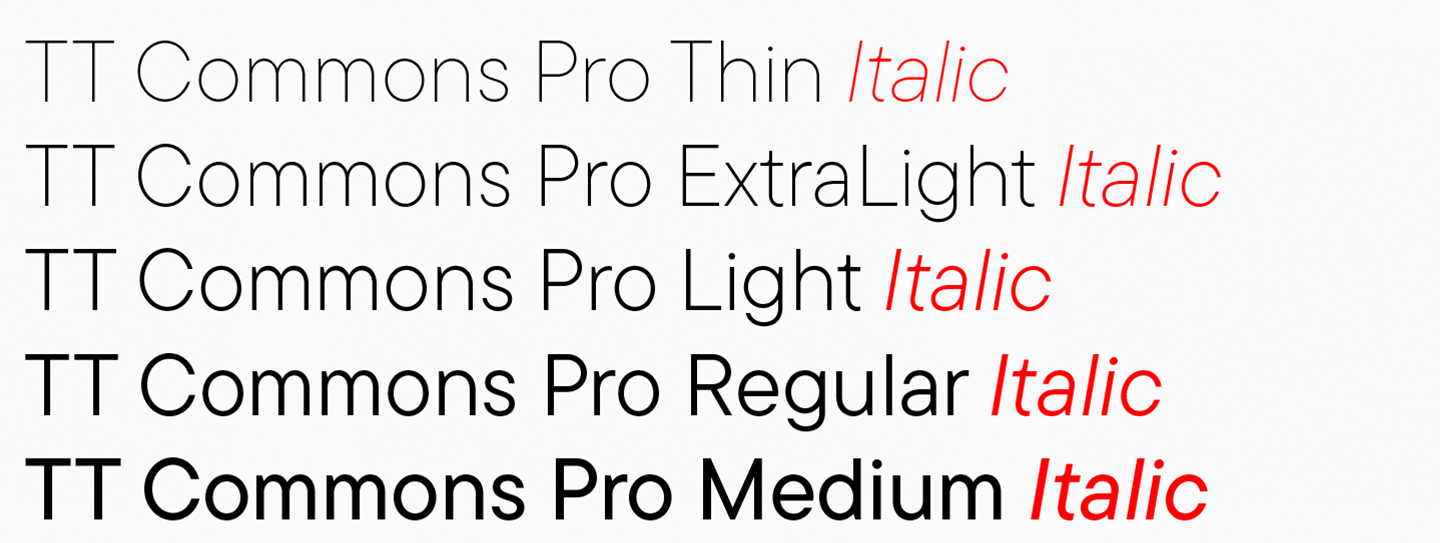
Al trabajar en TT Commons™ Pro, revisamos minuciosamente todos los puntos y contornos, ajustamos las terminaciones, los grosores de los astiles y las diagonales, asegurándonos siempre de preservar la autenticidad del TT Commons™ clásico.

Durante el proceso de trabajo, prácticamente redibujamos la fuente desde cero, adaptando armoniosamente este éxito de ventas a nuevos estándares. Paralelamente, ampliamos el conjunto de caracteres, añadimos nuevos idiomas y estilos. Además, creamos dos nuevas subfamilias: TT Commons™ Pro Condensed y TT Commons™ Pro Expanded. Estas representan versiones más estrechas y más anchas del nuevo TT Commons™ Pro, que se han convertido en una parte integral de la fuente variable en la que estuvimos trabajando.

Las fuentes variables son la nueva clásica de nuestro estudio, y actualmente las creamos prácticamente para todas las nuevas familias tipográficas. Alcanzar este nivel desde el punto de vista técnico nos llevó tiempo, especialmente considerando que la demanda de fuentes variables entre nuestra audiencia es realmente alta. No es para menos: con una fuente de este tipo, un diseñador no tiene que limitarse a elegir entre los estilos existentes, sino que puede crear el suyo propio con parámetros perfectamente adaptados a su proyecto.

La versión final de TT Commons™ Pro se lanzó en las plataformas en la primavera de 2021. La familia tipográfica creció hasta incluir 62 estilos, incluida una versión variable, y el conjunto de caracteres se amplió a un valor récord de 1546 glifos. La fuente cuenta con hinting manual, un kerning impecable y funciones avanzadas que aseguran comodidad para cualquier diseñador.
Buscamos ampliar al máximo el campo de aplicación de la fuente. Por eso, inmediatamente después del lanzamiento de TT Commons™ Pro, comenzamos a desarrollar una nueva subfamilia: la versión monoespaciada.
La idea de complementar nuestras fuentes más exitosas con versiones monoespaciadas lleva tiempo rondando en nuestro estudio. Originalmente utilizadas en programación, estas fuentes han ganado popularidad en el diseño en los últimos años. Por supuesto, muchos encontrarán interesante usar el familiar TT Commons™ en su versión monoespaciada, ya que esta subfamilia conserva las principales características visuales de la familia original, aunque con nuevas formas.
La singular fuente monoespaciada TT Commons™ Pro Mono, donde los glifos se ajustan a un cuadro de 600 unidades, será una herramienta valiosa para diseñadores. Más aún porque, además de sus 14 estilos, incluye una versión variable, y se han preservado todas las funciones OpenType familiares y funcionales.

TT Commons™ Pro y TT Commons™ Pro Mono son proyectos valiosos para el estudio, ya que representan el crecimiento profesional de nuestro equipo, la visión creativa de los diseñadores tipográficos y las necesidades de nuestra audiencia.

Un bonus para los estetas: TT Commons™ en proyectos
Hemos compartido con ustedes la historia de uno de los principales bestseller del estudio, pero la verdad es que los diseñadores aman con los ojos. Así que basta de palabras, ¡TT Commons™ y TT Commons™ Pro pueden impresionar sin necesidad de ellas!
Como cierre, compartimos ejemplos de cómo se han utilizado TT Commons™ y TT Commons™ Pro en proyectos reales: inspírense para crear sus propias obras maestras.



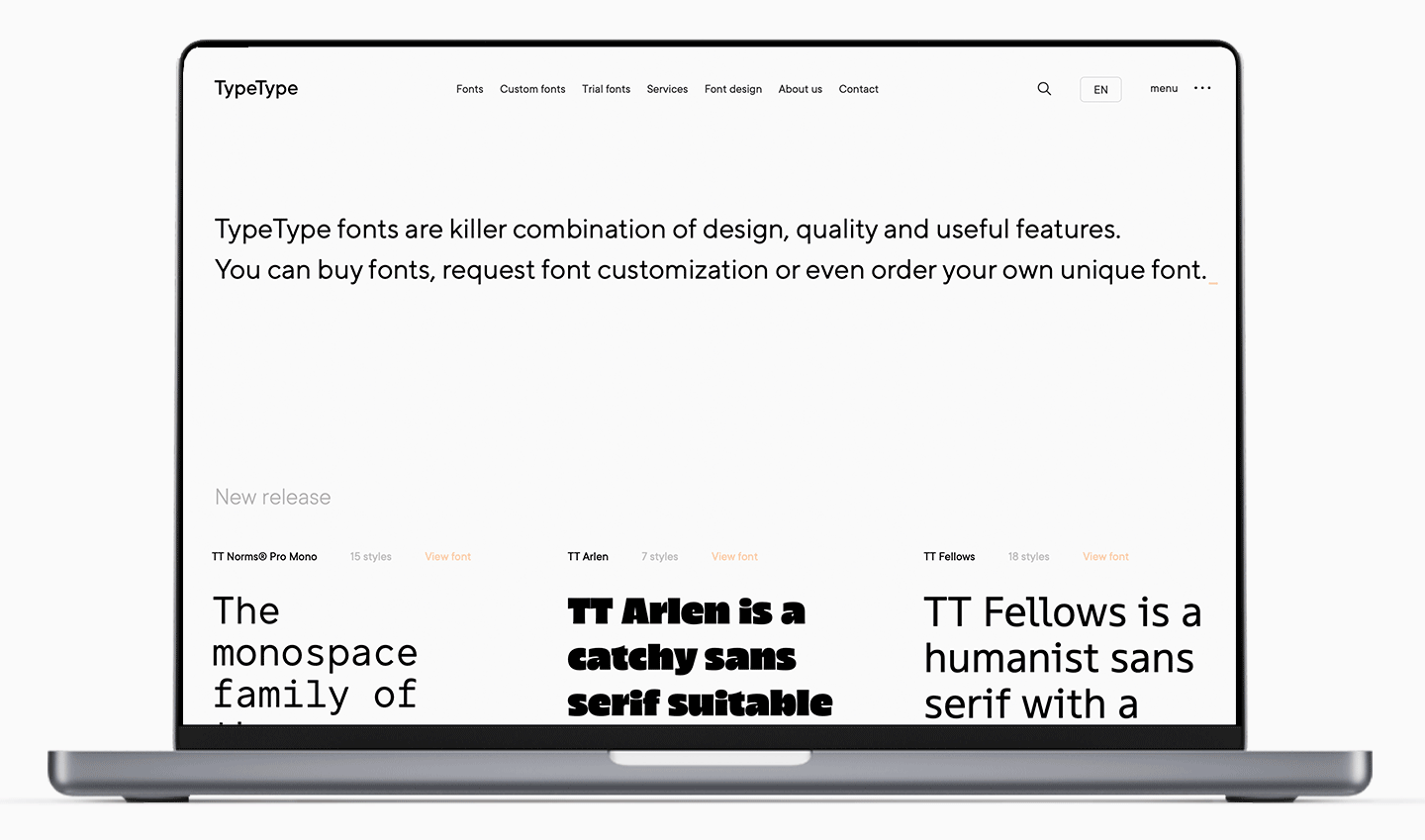
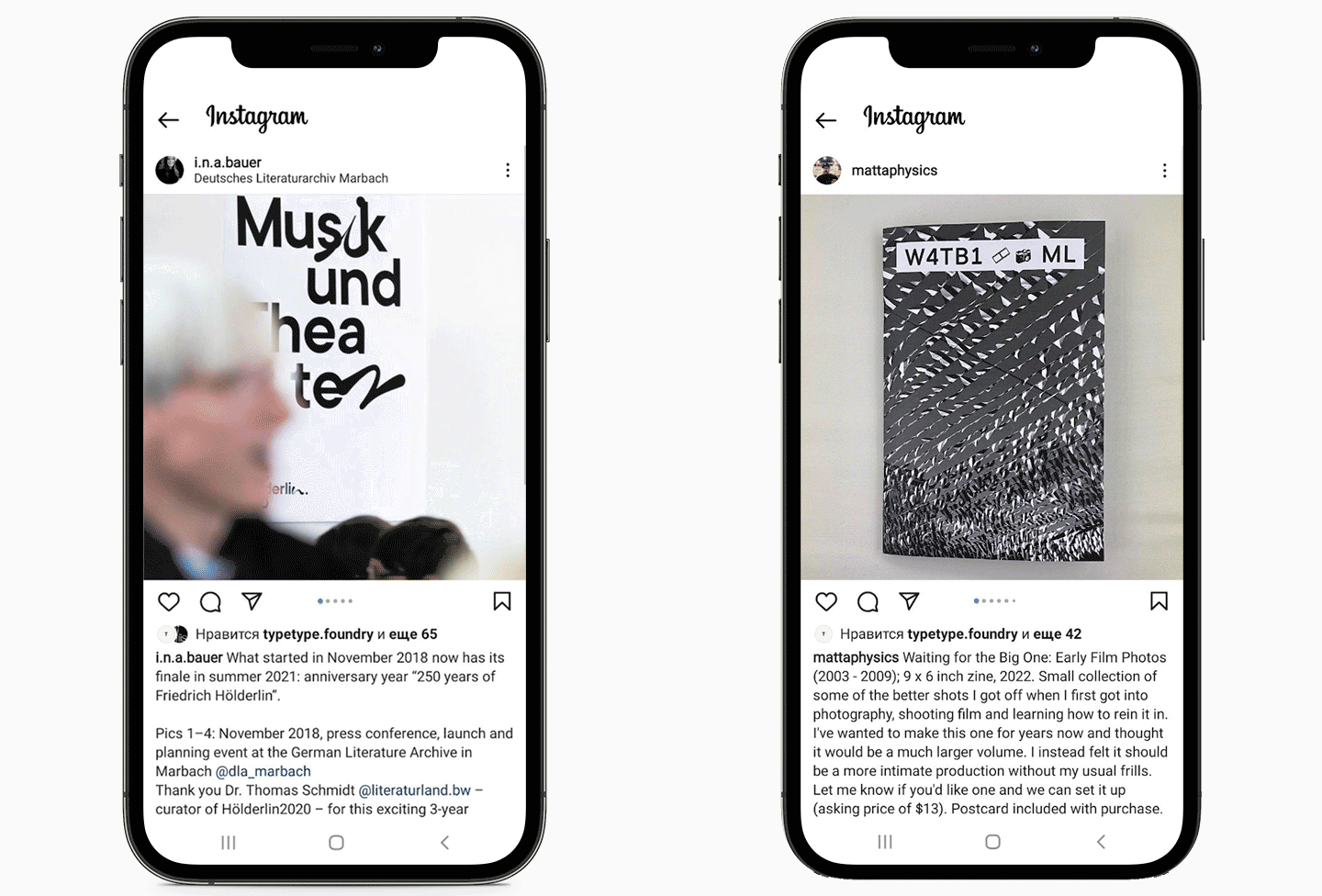

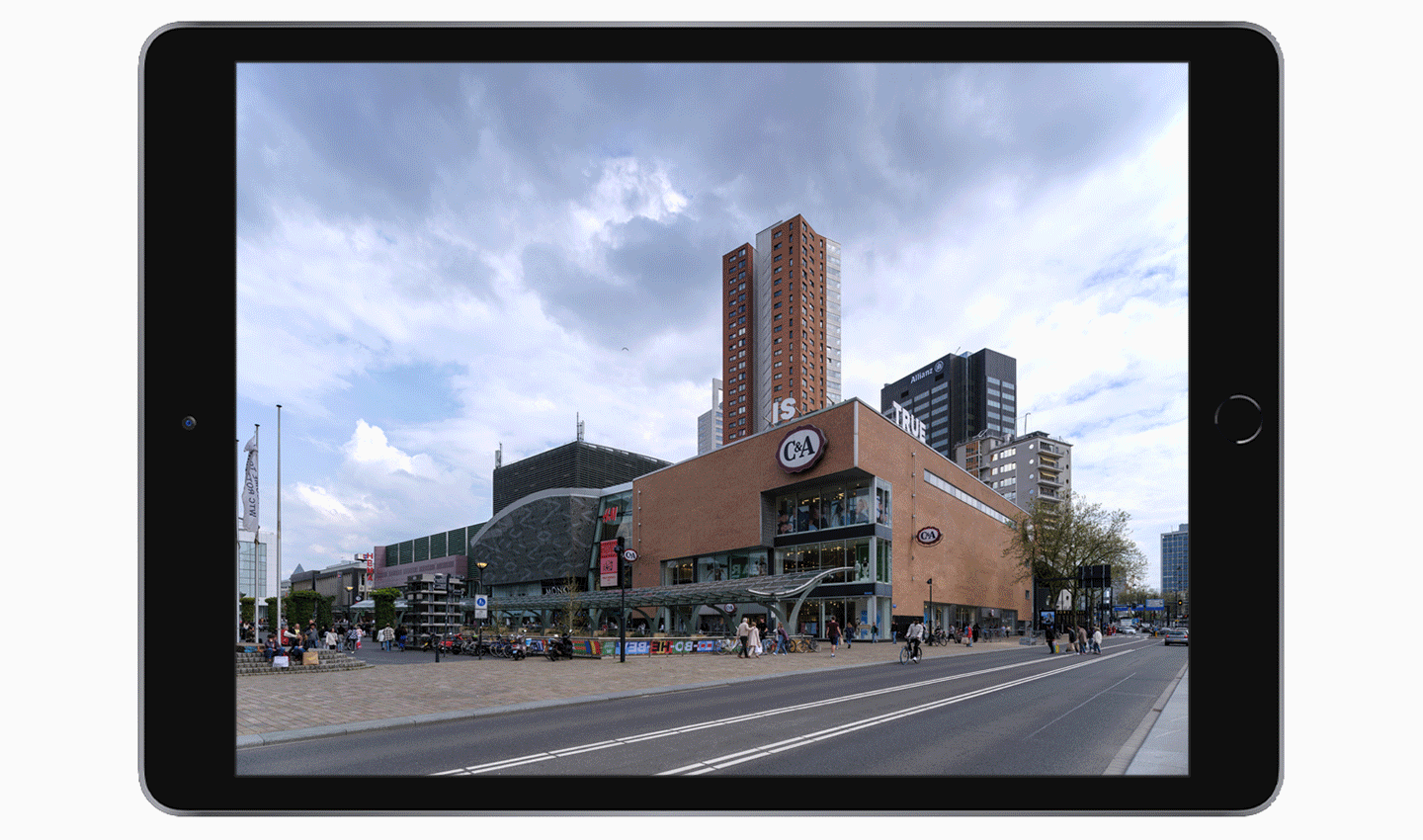
P.D. A todos los que deseen saber más sobre el desarrollo de TT Commons™ Pro, los invitamos a ver la conferencia en YouTube.
Worked on the font
Ivan Gladkikh—technical director, kerning
Yulia Gonina—art director
Pavel Emelyanov—original idea of font family
Marina Khodak—type designer, font verification
Antonina Zhulkova—type designer, font review/editing, font verification
Kseniya Karataeva—type designer, font review/editing
Nadyr Rakhimov—type designer, italics styles
Kirill Maslov—mastering, italics styles
Yuri Nakonechny—mastering
Victor Rubenko—font hinting specialist, scripts developing
Eugene Tantsurin—lead type designer (mono subfamily)
Yulia Soloveichik—type designer/ mono italics



